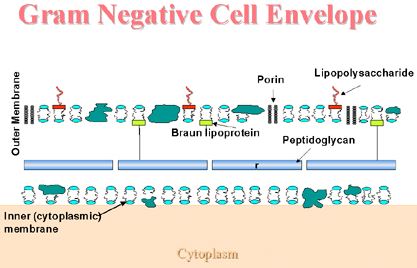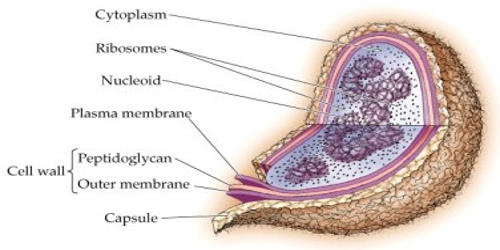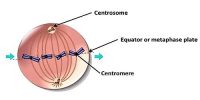Most prokaryotic cells, particularly the bacterial cells, have a chemically complex cell envelope. Prokaryotic cell envelope possesses a chemically complex cell envelope. The cell envelope is a combination of the cell membrane, cell wall, and an outer membrane if it is present. The cell envelope consists of a tightly bound three-layered structure i.e. the outermost glycocalyx followed by the cell wall and then the plasma membrane. The cell envelope comprises of three layers: the outermost glycocalyx, the cell wall, and the plasma membrane. All three layers together act as a single protective unit. Although each layer of the envelope performs a distinct function, they act together as a single protective unit. Usually, this envelope is a characteristic of prokaryotes like bacteria. It comprises the inner cell wall and the cell wall of a bacterium.
Bacteria can be classified into two groups on the basis of the differences in the cell envelopes and the manner in which they respond to the staining procedure developed by Gram viz., those that take up the gram stain are Gram-positive and the others that do not are called Gram-negative bacteria.
- Gram-positive – Cells that take up the gram stain and are stained dark blue or purple. This helps in retaining the crystal violet dyes during gram-staining. The cell wall is embedded with teichoic acids and lipoteichoic acids.
- Gram-negative – Cells that do not take up the gram stain and are stained pink or light red. It contains a cell wall with a thin peptidoglycan layer due to which the cell wall is unable to retain crystal violet stain upon decolorization during gram staining.

Glycocalyx differs in the composition and thickness of different bacteria. It could be a loose sheath called the slime layer in some, while in others it may be thick and tough, called the capsule. The cell wall determines the shape of the cell and provides strong structural support to prevent the bacterium from bursting or collapsing. The plasma membrane is semi-permeable in nature and interacts with the outside world. A special membranous structure called mesosome is formed by the extensions of the plasma membrane into the cell. This membrane is similar structurally to that of the eukaryotes.
- Glycocalyx: An outermost layer. In most bacteria, (e.g. Escherichia coli) it is loosely distributed around the cell and called slimy layer which prevents desiccation, and helps in adhesion. In some bacteria, it becomes hard and tough and is called capsule which resists phagocytosis.
- Cell wall: It lies inner to glycocalyx, rigid, protective, and supportive in function. In gram-negative bacteria, it is two-layered: inner layer of peptidoglycan and outer layer of glycolipids.
- Plasma membrane: innermost layer, transparent and semipermeable. It is lipoproteinous and trilaminar and contains components of the electron transport chain and enzymes of respiration.
Function – The cell envelope provides structural integrity to the cell. In prokaryotes, it protects the cell from the internal turgor pressure caused due to a high concentration of macromolecules inside the cell.














